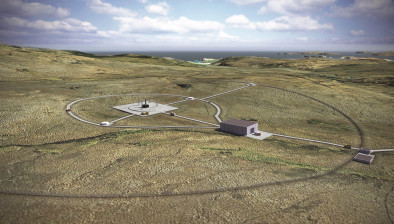Inverness Airport named preferred site for air traffic control hub
 Inverness Airport has been identified as the preferred location for a proposed remote towers control centre for seven regional airports.
Inverness Airport has been identified as the preferred location for a proposed remote towers control centre for seven regional airports.
Highlands and Islands Airports Limited (HIAL) said a scoping study from consultants Ekos, setting out why Inverness should be the preferred location, has been accepted, in principle, by its board.
The first of its kind in the UK, the project will change the way air traffic services are provided at seven HIAL airports by running activities in a centralised tower and surveillance centre, and modernising the way airspace is managed.
Cameras offer air traffic controllers panoramic views of the airfield showing more detail than is possible with the human eye.
Digital tower technology is currently operating all over the world, including Germany, Ireland, New Zealand and the United States.
The Board has also committed to undertaking a communities impact assessment as part of HIAL’s ATM (Air Traffic Management) 2030 project.
ATM 2030 is a transformational change programme and is the largest of its kind within UK air traffic control. It will bring together air traffic management of seven airports into a single location including HIAL airports at Sumburgh, Dundee, Inverness, Wick John O’Groats, Kirkwall, Stornoway and Benbecula. Timescales for the implementation of the project have still to be fully discussed and approved.
HIAL managing director Inglis Lyon, said: “The scoping study identifies Inverness as having the most compelling case to support HIAL’s continued delivery of its core activities.
“We have also taken the views of our staff into account and Inverness was their preferred option should relocation be required. Inverness is best suited from a technical, operational and staffing perspective. Inverness is centrally located in relation to the other HIAL airports and has direct flights to Sumburgh, Kirkwall, Stornoway and Benbecula. It has road and rail connections with Dundee and Wick. HIAL’s focus is, and will continue to be, on aviation service delivery. The airports it operates and the connections it provides are an important part of Scotland’s transport network and directly contribute to the economic prosperity and sustainability of communities, particularly in remote regions and the islands.
“From an organisational perspective, maintaining a high value service is the primary goal and it is vital the preferred location supports HIAL to deliver its core activities, namely, safe and sustainable aviation services.”
HIAL interim chair Lorna Jack said: “The implementation and delivery of the remote tower and surveillance centre is the largest and most complex project HIAL has ever undertaken.
“That is why we are committed to undertaking a thorough communities impact assessment that will take into account the views of local people, business leaders and local authorities to ensure the best decisions are made. Prioritising aviation service delivery to the islands and other locations we serve is all about supporting those communities from both economic and social perspectives.
“We know that these changes will be challenging in those particular communities but our overall aim is to future-proof the services that they depend on. We will now work with our colleagues and stakeholders to establish a centre of excellence that will deliver for the people and communities we serve.”
HIAL said the centralised system would be phased in over a period of up to 10 years and that there were no planned reductions in staff numbers.























